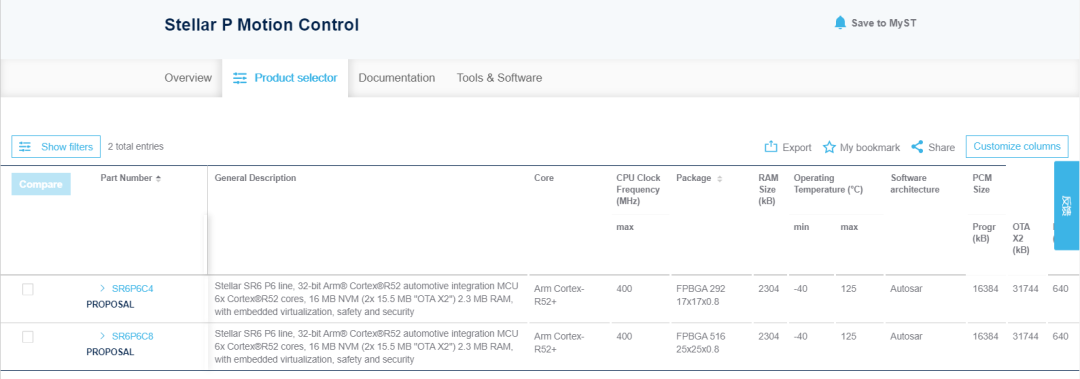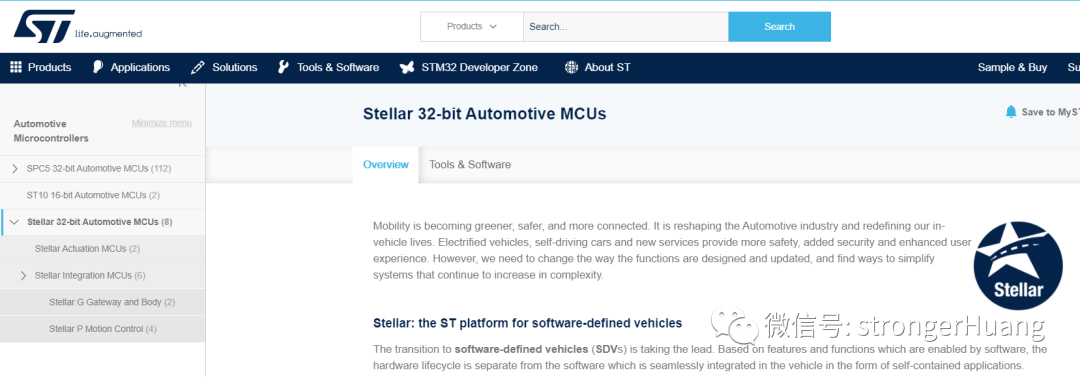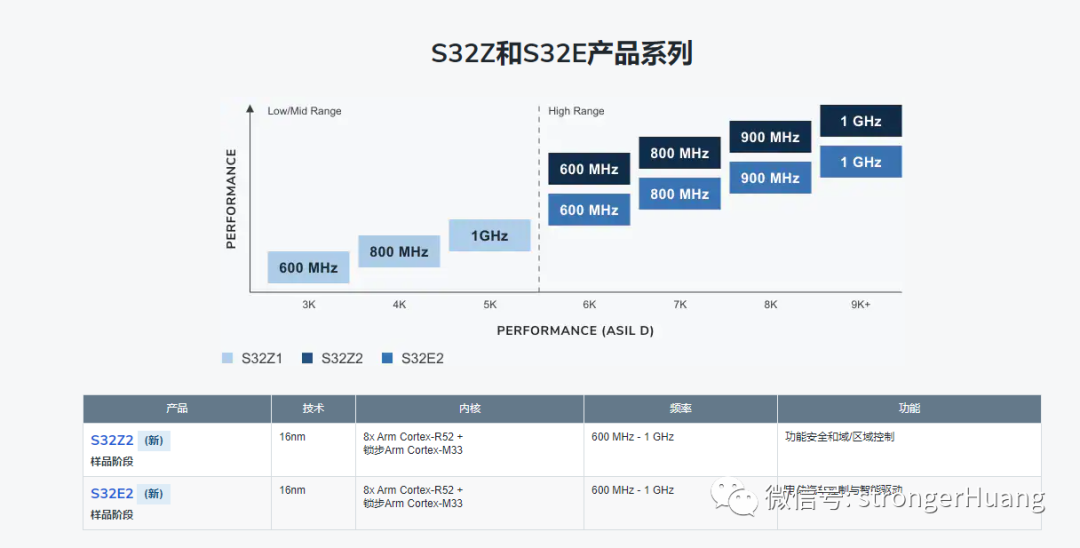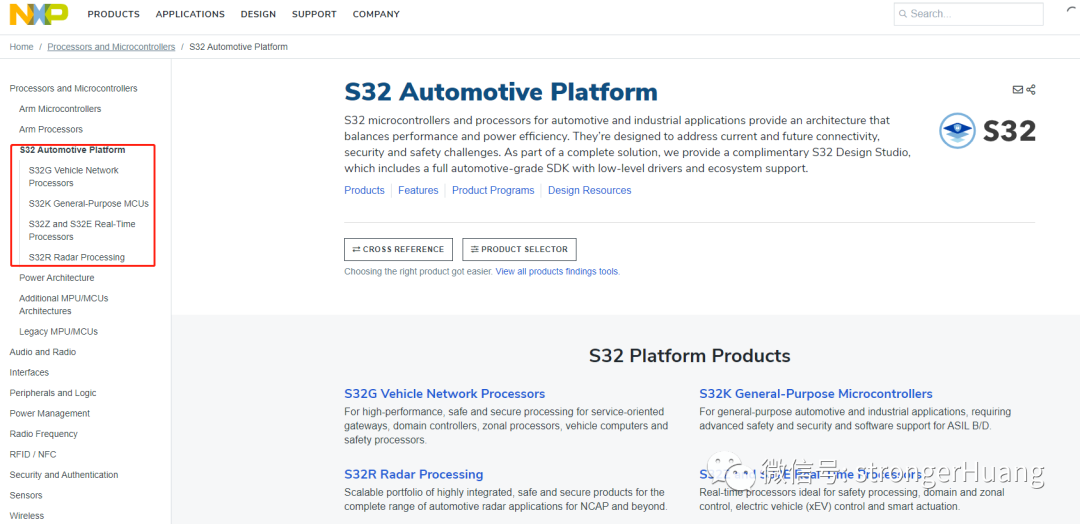Follow+Starred Public Account, don’t miss exciting content

Author | strongerHuang
WeChat Public Account | strongerHuang
In recent years, with the continuous rise of new energy vehicles, automotive-grade MCUs have also been continuously updated and upgraded, and major general-purpose MCU manufacturers are actively laying out automotive-grade MCUs.
ST Automotive-grade MCU
Recently, STMicroelectronics launched the Stellar P6 automotive-grade MCU for EV (new energy) platforms.
This MCU series uses a 28nm process technology, embedded with up to 20 MB Flash, and features up to 6 Cortex-R52 real-time processor cores, with a temperature range of -40 to 125 degrees Celsius.

STMicroelectronics’ Luca Rodeschini stated:
The real-time, energy-efficient Stellar P6 automotive microcontroller combines advanced integration and drive capabilities in motion control and energy management, ensuring a smooth transition from traditional ICE/EV to the new software-defined vehicle drive traction architecture.
It was mentioned that the 28nm process is manufactured in ST’s own wafer fab. It is worth noting that 28nm is rare in the general-purpose MCU field; currently, ST’s general-purpose MCUs use advanced processes, with the latest being the STM32U5 which uses a 40nm process. Due to the higher requirements and stronger performance of automotive-grade MCUs, more advanced process technology is needed.
ST Automotive-grade MCUsBefore this, ST also launched several automotive-grade MCUs, such as the 16-bit automotive-grade MCU of the ST10 series and the 32-bit automotive-grade MCU of the SPC5 series.The latest is the Stellar series (translated by Youdao, not sure if this translation is correct), which includes the Stellar E series, Stellar G series, and the latest Stellar P series.

Link:
https://www.st.com/en/automotive-microcontrollers/stellar-32-bit-automotive-mcus.html
NXP Automotive-grade MCU
If 28nm is a turning point in chip technology, then 16nm technology is definitely the latest technology in the MCU field.
Also in the automotive-grade MCU category, not long ago, NXP launched the 16nm automotive-grade MCUs: the S32Z and S32E series processors.
According to the official introduction, these two series of processors have a maximum clock frequency of 1GHz. The S32Z processor is suitable for safety processing, domain control, and regional control, while the S32E processor is suitable for electric vehicle (xEV) control and intelligent driving.

NXP Automotive-grade MCUNXP has performed well in the general MCU field, and in fact, has excelled even more in the automotive MCU field.The product line covers multiple areas of automotive control processors, such as the S32G automotive network processor, S32K general microcontroller, S32R radar processing, S32Z, and S32E real-time processors, etc.

About Automotive-grade MCUs
Many readers here may be involved in the R&D of general MCUs, so I would like to briefly introduce some information about automotive-grade MCUs.
1. Automotive-grade MCU Manufacturers
Currently, the main manufacturers dominating the automotive-grade MCU market worldwide include NXP, Infineon, STMicroelectronics, Renesas, Texas Instruments, Microchip, etc.
Yes, you read that right; these semiconductor manufacturers perform well in the general MCU field and also do well in the automotive-grade MCU field.
2. Process Technology
Although mobile processors are now widely using 5nm process technology, most automotive-grade MCUs still use 40, 45, 65nm process technologies, with a small number using 28nm process MCUs.The aforementioned ST 28nm and NXP 16nm automotive-grade MCUs are still in the “sample” stage and may be widely used in about two years.
3. Foundry Production
In recent years, due to the “trade war” and “sanctions”, chips have received a lot of attention, and the foundries for chips have also been in the spotlight.Most mobile SoCs, general MCUs, and automotive-grade MCUs are still produced by TSMC. The aforementioned ST’s 28nm process Stellar P6 automotive-grade MCU is manufactured in ST’s own wafer fab, which indicates that ST has been doing well in recent years.This article ends here. In the past two years, due to the pandemic, trade wars, and sanctions, the chip industry has been severely impacted. I hope this wave ends soon and normalcy is restored.
———— END ————

● Column “Embedded Tools”
● Column “Embedded Development”
● Column “Keil Tutorials”
● Selected Tutorials from the Embedded Column
Follow the public accountReply “Join Group” to join the technical exchange group according to the rules, reply “1024” to see more content.


Click “Read Original” to see more shares.